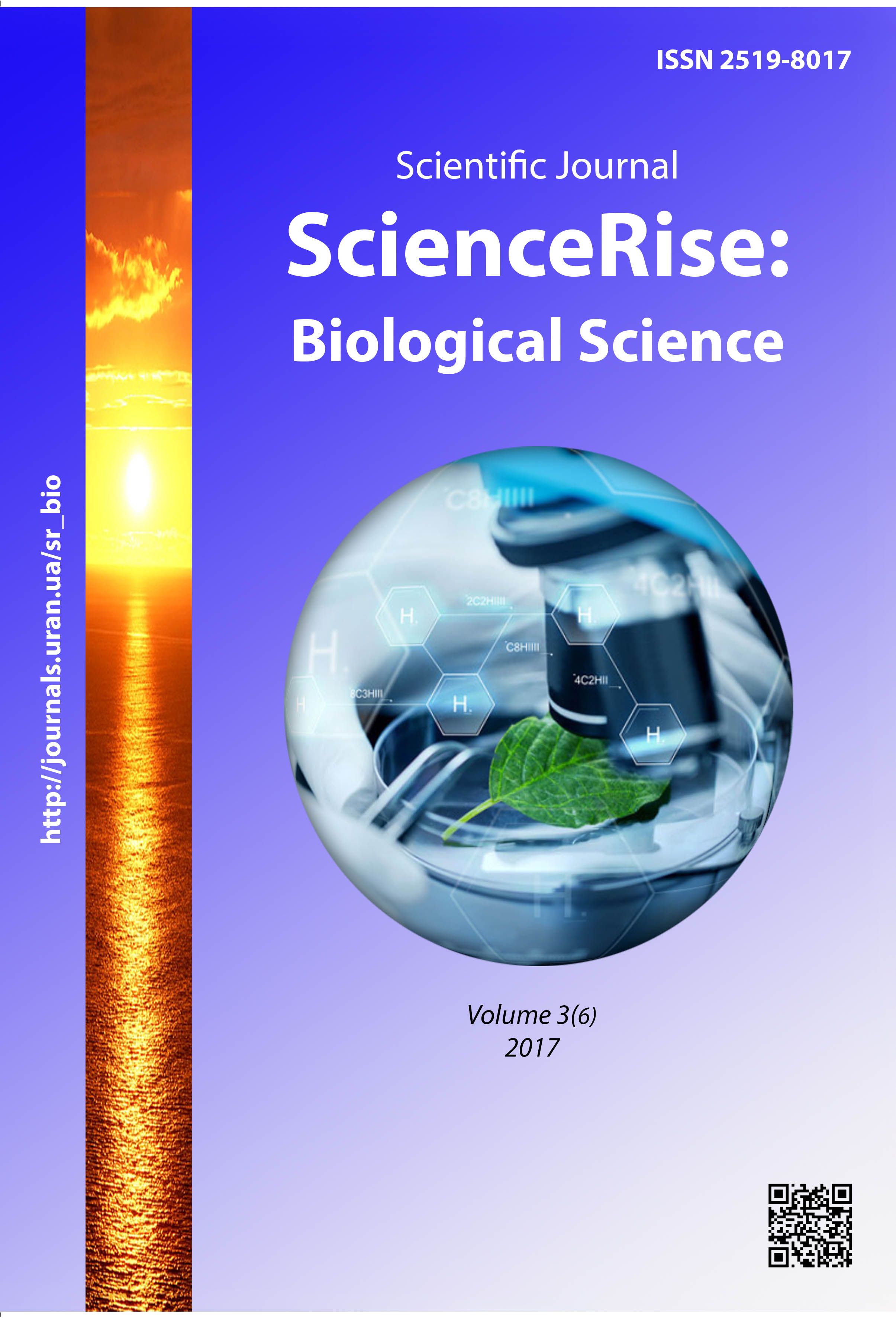Dependence of Ditylenchus destructor thorne population density from soil humidity and temperature in the North-East of Ukraine
DOI:
https://doi.org/10.15587/2519-8025.2017.105511Keywords:
Ditylenchus destructor, population density, temperature, humidity, abiotic factors, correlations, regressionAbstract
Aim. The aim of the study – to establish the parasitical activity of Ditylenchus destructor Thorne depending on abiotic factors under conditions of the Northern East of Ukraine.
Methods. The studies were carried out in artificially controlled conditions of the temperature and humidity. The microscopic analysis was used.
Results. It was established, that the parasitological activity of caulescent nematodes causes the injury of potato and determines the degree of its harmfulness in Northern-Eastern regions of Ukraine. There was studied the influence of two abiotic factors – temperature and humidity on the development of these nematodes. Just they are important limiting ecological factors of the increase of зpopulation density and aggressiveness of the species under conditions of the Northern East of Ukraine.
Conclusions. With the increase of the soil humidity from 40 to 80 % grows the number of injured stems and tubers of potato. They are less changed at the low soil temperature. The maximal potato injury was at the morning temperature 17–20 °С and day one 20–24 °С. The established correlative-regressive dependencies may be used at the elaboration of prognoses of the development and arrangement at fighting against this vermin on potato crops
References
- Efremova, T. G. (1961). Steblevaya nematoda kartofelya i meryi borbyi s ney. Kartofel i ovoschi, 9, 19–20.
- Korab, I. I., Tereschenko, Е. F. (1954). O sisteme meropriyatiy po borbe so steblevoy nematodoy kartofelya – Ditylenchus destructor Thorne v sevooborotah. Nematodnyie bolezni rasteniy. Moscow, 61–66.
- Belova, O. D. (1939). Rezultatyi nablyudeniy i polevyih opyitov po izucheniyu steblevoy nematodyi na kartofele. Sbornik rabot po nematodam selskohozyaystvennyih rasteniy. Moscow, 142–149.
- Ryiss, R. G. (1962). Steblevaya nematoda kartofelya i meryi borbyi s ney. Kyiv, 119.
- Sayko, V. F. (1958). Ne dopustyty poshyrennya steblovoyi nematody na polyah Ternopilschyny. Ternopil, 1–8.
- Kuhn, H. (1959). Zur Kenntnis der Wirtspflanzen von Ditylenchus destructor Thorn. Nachrichtenbl. Deutsch. Pflanzenschutzdienst, 13 (3), 57–58.
- Zhylіna, T. M., Sіgarova, D. D. (2004). Poshyennya steblovoyi nematody kartoplі Ditylenchus destructor v Chernіgіvskіy obl. Vistnik zoologii, 18, 52–54.
- Sіgarova, D. D., Zhylіna, T. M. (2004). Dytylenkhoz bulb kartoplі v perіod zberіgannya. Vіsnik agrarnoyi nauky, 7, 21–25.
- Dospehov, B. A. (1973). Metodika polevogo opyita. Moscow: Kolos, 336.
- Ustinov, A. A., Linnik, G. N. (1954). Steblevaya nematoda kartofelya. Kharkiv, 54.
Downloads
Published
How to Cite
Issue
Section
License
Copyright (c) 2017 Katerina Borodina, Roman Bilash

This work is licensed under a Creative Commons Attribution 4.0 International License.
Our journal abides by the Creative Commons CC BY copyright rights and permissions for open access journals.
Authors, who are published in this journal, agree to the following conditions:
1. The authors reserve the right to authorship of the work and pass the first publication right of this work to the journal under the terms of a Creative Commons CC BY, which allows others to freely distribute the published research with the obligatory reference to the authors of the original work and the first publication of the work in this journal.
2. The authors have the right to conclude separate supplement agreements that relate to non-exclusive work distribution in the form in which it has been published by the journal (for example, to upload the work to the online storage of the journal or publish it as part of a monograph), provided that the reference to the first publication of the work in this journal is included.









